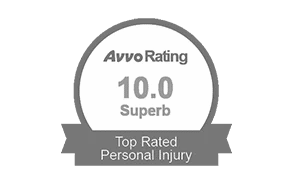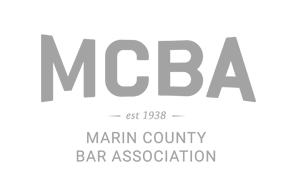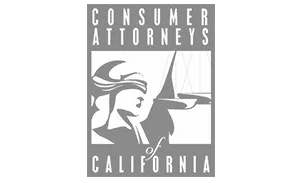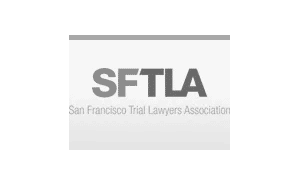
Hurt in an accident? Having personal injury protection (PIP) or Med Pay can help cover your injuries. Contact Wakeford Law today to schedule a free, no-obligation consultation: (415) 569-7495
There is no way around it; paying for insurance is not fun. Neither is getting in a car accident. However, being in a car accident where you or the other driver is uninsured makes a bad situation even worse.
Car insurance comes in many forms. Given all the options, shopping for insurance is often a confusing and daunting process. While shopping for insurance, you may come across a product called personal injury protection.
In California, personal injury protection (PIP) is not an available insurance product. However, you can purchase a product called Med Pay that functions similarly.
Still, however, you may be wondering, How does PIP work? or, How does PIP differ from other forms of insurance? How do PIP and Med Pay differ?
If you seek the answers to these questions, look no further. Here, we break down PIP, Med Pay, and California insurance rules in general.
California Insurance Requirements
Each state in the US requires all drivers to maintain some form of automobile insurance policy. Insurance requirements ensure that all drivers maintain responsibility for the damages their vehicles cause or sustain. California is no different.
Like many other states, California requires drivers to maintain a minimum amount of liability coverage. Minimum liability coverage amounts help to level the legal playing field for all drivers in the state. The minimum requirements for an auto insurance policy in California are:
- $15,000 for the death or injury of any one person in any one accident;
- $30,000 for the death or injury of more than one person in any one accident; and
- $5,000 for the damage of another person’s property in any one accident.
California neither requires PIP coverage nor allows insurance companies to offer it. Instead, Med Pay is available as an alternative insurance add on.
What Personal Injury Protection Covers vs Other Forms of Insurance
PIP and Med Pay policies differ from general liability insurance policies in that they cover you, the policyholder, specifically. Generally, your basic liability insurance covers damage that you cause to others.
If you hit someone and injure them, your insurance policy covers their medical bills and property damage up to a point. If someone hits you and is at fault, their insurance pays for your medical bills and property damage.
This is not the case with a PIP or a Med Pay policy.
Basically, if you have a PIP or Med Pay policy, it covers damages associated with your injury regardless of whether you are at fault for an accident.
It should be noted that PIP and Med Pay policies do not reimburse policyholders for property damage. You need collision or comprehensive coverage for that.
Med Pay: A California Personal Injury Protection (PIP) Alternative
As noted, PIP coverage is not available for purchase in California. However, there is an alternative option for California drivers who like the idea of a PIP policy.
Med Pay policies function similarly to PIP policies for the most part and are offered by California insurance providers as an add on. However, Med Pay policies are typically not as expansive as PIP policies.
Med Pay is an optional insurance product in California that covers your medical bills similar to the way a PIP policy would. Like PIP policies, Med Pay policies generally cover medical expenses regardless of fault in an accident.
However, unlike most PIP policies, Med Pay policies are often limited to medical and funeral expenses specifically. PIP policies usually cover all economic expenses related to an injury, including lost wages. Med Pay policies, on the other hand, do not typically cover lost wages.
In addition to covering drivers themselves, Med Pay policies typically cover vehicle passengers, spouses, and family members. If you like the idea of PIP coverage, ask your insurance provider about their Med Pay policies.
It is important to remember that insurance policies are complex contracts. As such, some are written differently than others. Thus, it is crucial that you check with your own insurance provider to confirm the specifics of your particular policy.
PIP and No-Fault Systems
In the US, there are two basic systems of liability assessment when it comes to car accidents: fault systems and no-fault systems. In a no-fault system, the question of who is at fault for an accident does not necessarily arise when assessing liability for damages.
Instead, drivers first seek compensation for personal injury from their own insurance provider, often through a PIP policy, regardless of who is at fault for the accident. If injury damages exceed a certain threshold in a no-fault state, however, injured parties can still sue an at-fault driver for medical damages.
The at-fault party is still liable for property damage they cause in a no-fault state. Most drivers in no-fault states have property damage liability insurance for this purpose.
The states that use a no-fault system require drivers to maintain a PIP policy through their insurance provider. There are twelve states in the US, along with Puerto Rico, that use a no-fault system with a PIP requirement.
At-Fault Systems and PIP
There are 29 states in the US, including California, where you cannot purchase a PIP policy. Most states that require drivers to have PIP policies use a no fault system in assessing liability for car accident damages.
Conversely, the states where PIP coverage is not available all use an at-fault system in assessing car accident liability. Med Pay is a functional alternative to PIP policies in California and most at-fault states.
States that use an at-fault system to allocate car accident liability compare the percentage of fault of each driver to determine who is liable to pay what percentage of damages.
California uses a pure comparative fault system in allocating car accident liability, which means that you can recover some compensation from an at-fault driver even if you are more than 50% at fault yourself. PIP policies are not available in most at-fault states.
After a Car Accident in California
A car accident can upend the normalcy of your life in an instant, but The Wakeford Law Firm can help you get back on track as soon as possible.
On top of recovering from injuries, talking to your insurance company, and fixing your car, you need to pursue the right legal strategy to fully recover damages.
If it is unclear what legal strategy you should follow, how you should approach the insurance company, or what the fine print in your insurance policy says, we have you covered.
The Wakeford Law Firm’s experienced car accident attorneys are here to help you navigate the car accident claim process from start to finish. We will always fight hard to get the maximum settlement for your claim.
At The Wakeford Law Firm, we pride ourselves on the work we do for our clients, so reach out to us today if you need assistance. Contact us online or call us at 415-569-7495 for a free case review!
How useful was this post?
Click on a star to rate it!
Average rating 0 / 5. Vote count: 0
No votes so far! Be the first to rate this post.







